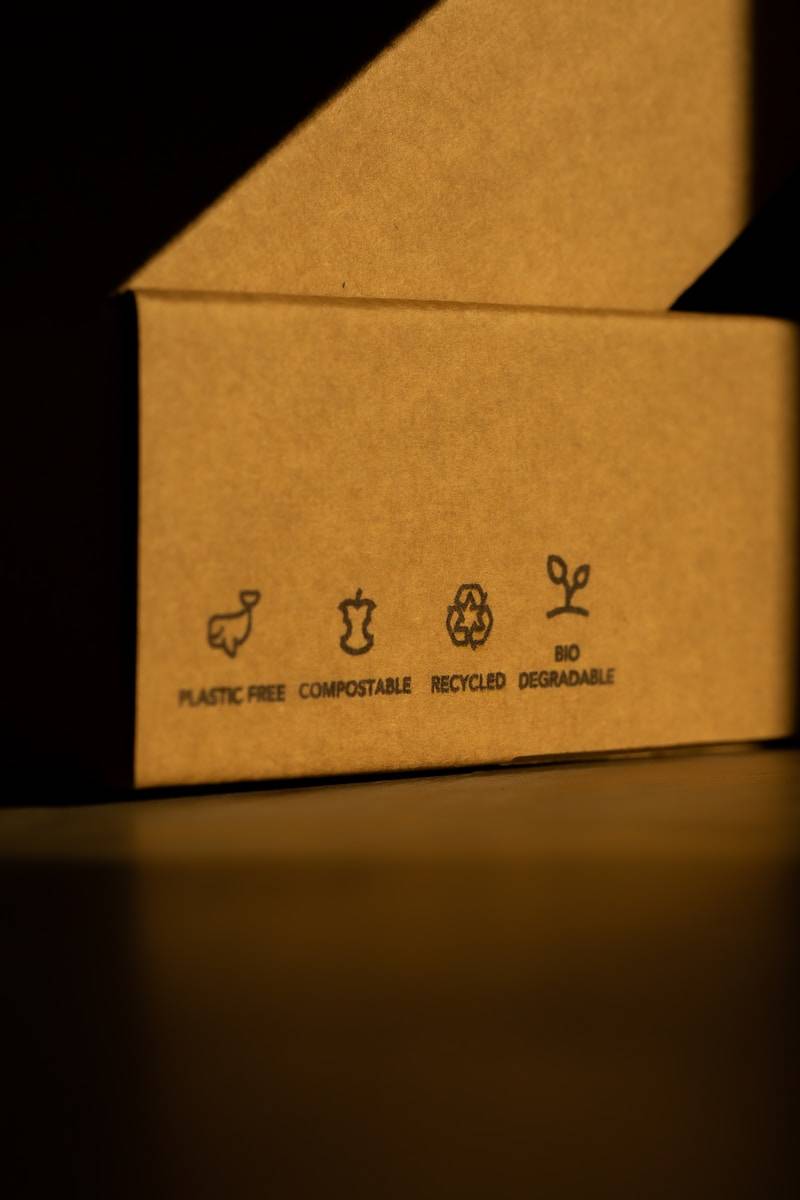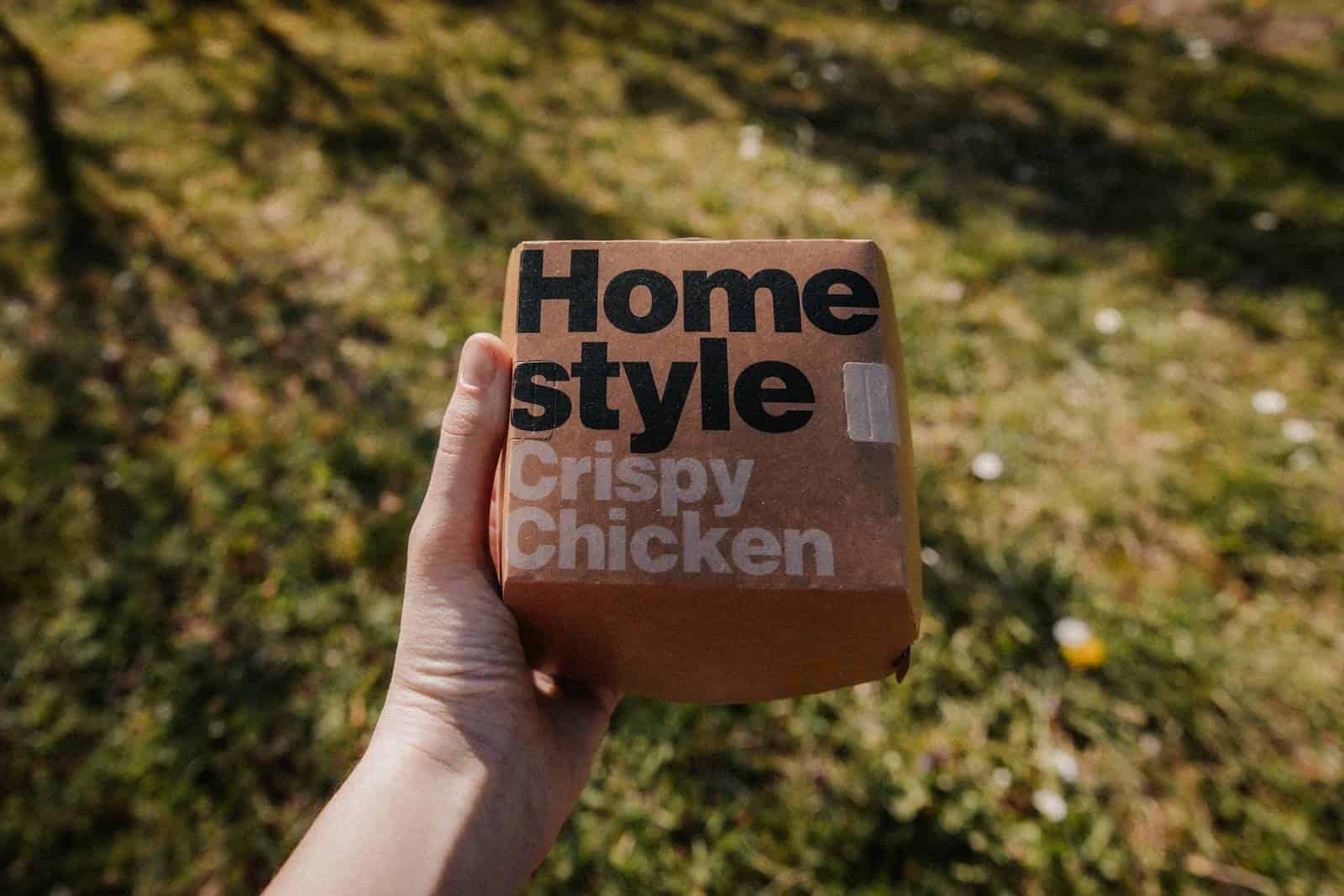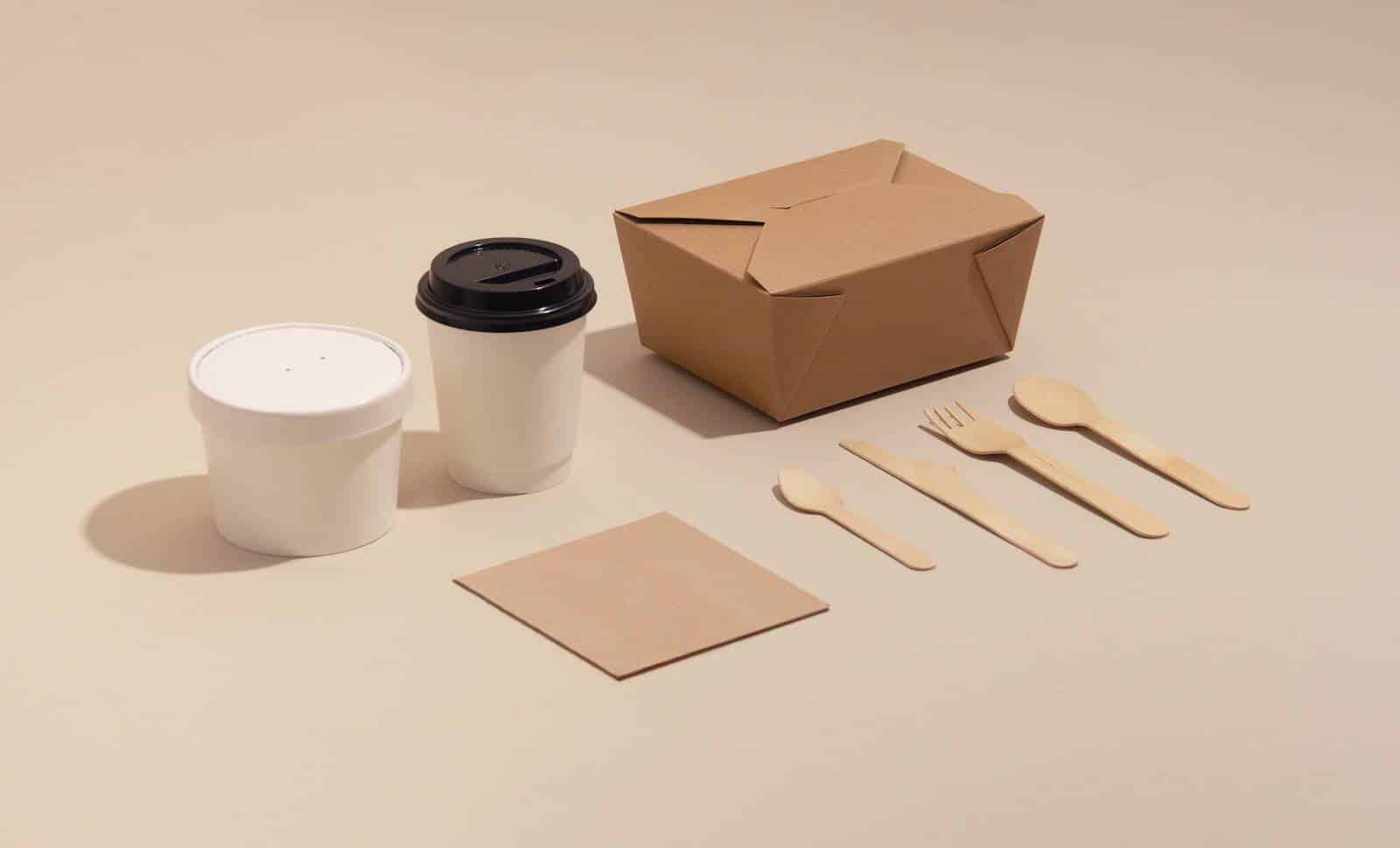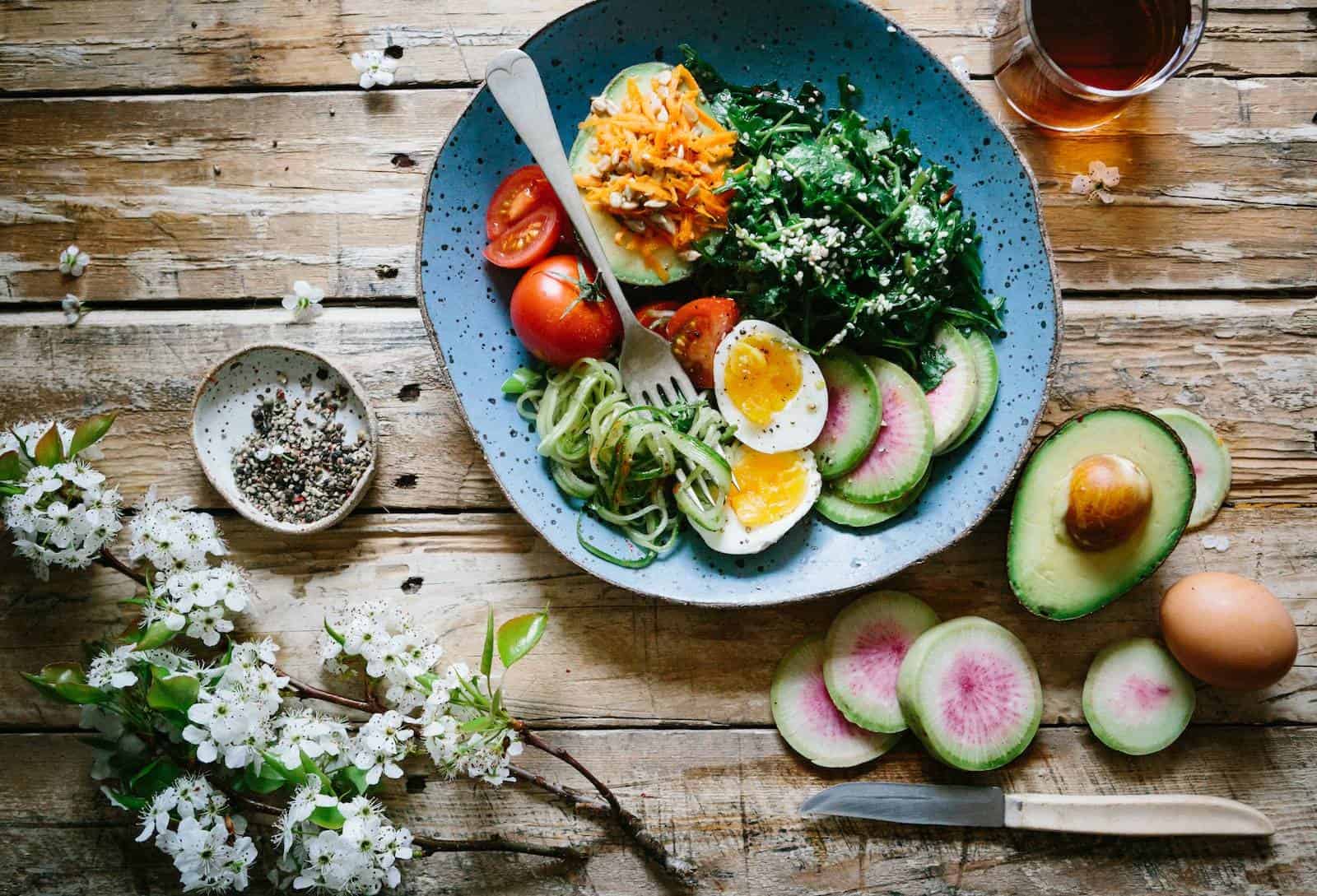Contents
- 1 What is Sustainable Packaging?
- 2 Examples & Types of Sustainable Packaging for Food
- 3 Avocado Pits as Plastic Replacement for Cutlery
- 4 Which Food Packaging Materials Should I Use?
- 5 Tips for Choosing Eco-Friendly Food Packaging
- 6 Easy Ways to Reduce Waste with Sustainable Home Food Packaging
- 7 Waste Reduction
- 8 Packaging greatly impacts the carbon footprint of food and beverage products.
- 9 References and Sources
- 10 Frequently Asked Questions
- 11 Conclusion
Are you interested in minimizing waste and creating a more eco-friendly home? Uncover the significant influence of sustainable food packaging. We will delve into various alternatives such as biodegradable, compostable, recyclable, and reusable containers. Gain insight into the benefits and drawbacks of materials like paper, glass, metal, and plastic.
Additionally, receive guidance on selecting environmentally friendly packaging and reducing waste in your household. Together, let’s contribute to a greener future through sustainable food packaging.
What is Sustainable Packaging?
Sustainable packaging refers to environmentally-friendly packaging materials and practices that minimize harm to the planet. It involves using renewable resources, reducing waste, and lowering carbon emissions. This can include packaging made from recycled or biodegradable materials and encourages recycling, reusability, and responsible disposal.

Benefits of Sustainable Food Packaging
Sustainable food packaging benefits the environment and consumers. It minimizes waste, promotes recycling and composting, and reduces plastic waste. It also extends shelf life, reduces food waste, and caters to environmentally conscious consumers. Embracing sustainable options like biodegradable materials and innovative designs offers an environmentally sustainable path for food packaging.
What Makes Sustainable Packaging Better?
Sustainable packaging is superior because it minimizes waste and its impact on the environment. It’s typically made from renewable or recycled materials and can be easily recycled or composted, reducing landfill waste. Additionally, sustainable packaging aids in cutting down carbon emissions linked to manufacturing and transportation.
Balancing Sustainability with Convenience
Sustainable home food packaging must balance convenience with sustainability. It should be practical and easy to use while also reducing single-use plastics and using eco-friendly materials. Packaging should be resealable, microwave-safe, and easy to store, allowing for convenient storage and reheating of leftovers. By finding this balance, sustainable packaging encourages eco-friendly practices in daily life.

Examples & Types of Sustainable Packaging for Food
Sustainable food packaging is crucial for reducing waste and promoting sustainability. It includes biodegradable, compostable, and recyclable options. Plant-based, minimalist, and reusable packaging are also important for achieving environmental responsibility.
Biodegradable Packaging
Biodegradable packaging is a more eco-friendly option compared to traditional plastic packaging. It is made from materials that can naturally break down, such as compostable bags, paper-based food containers, and bioplastic wraps. By opting for biodegradable packaging, we can reduce waste in landfills and lessen our overall environmental impact. P
roper disposal of biodegradable packaging in compost bins or facilities that facilitate decomposition is crucial. With the growing awareness of sustainability, many food manufacturers are embracing biodegradable packaging to meet consumer demand for eco-friendly food packaging options.
Compostable Packaging
Compostable packaging is an eco-friendly alternative to traditional plastic packaging. The sustainability aspect of compostable materials makes them better for the environment, as they can break down into nutrient-rich compost. Unlike plastic, which can take hundreds of years to decompose, compostable packaging materials offer a more sustainable solution. These materials are often derived from plant fibers, cornstarch, or sugarcane pulp.
Compostable packaging can be utilized for a variety of food packaging purposes, such as bags, containers, and wraps. By opting for compostable packaging, you contribute to waste reduction and minimize the environmental impact of discarded food packaging.

Recyclable Containers
Using recyclable containers for food packaging promotes sustainability and reduces waste. These containers, made from easily recyclable materials like cardboard or plastic, offer an eco-friendly solution. By choosing recyclable containers, you contribute to a sustainable future and minimize your environmental impact. Proper disposal, by cleaning the containers, allows for better recycling and repurposing. Using recyclable containers aligns your packaging choices with consumers’ eco-friendly values.
FSC-Certified Packaging
Derived from responsibly sourced and managed materials, FSC-certified packaging promotes forest conservation and biodiversity. With its stringent environmental and social standards, this type of sustainable packaging is ideal for a wide range of food products, including snacks, beverages, and fresh produce. By opting for FSC-certified packaging, consumers actively support sustainable practices while minimizing their environmental footprint.
Zero Waste Packaging
Zero waste packaging is a sustainable approach that minimizes waste and promotes eco-friendly practices. It involves reusable containers, compostable materials, and bulk food dispensers. By adopting zero waste packaging, you can reduce your environmental impact. Reusable containers like glass jars or stainless steel offer a sustainable alternative to traditional packaging. Compostable or biodegradable packaging made from plant-based materials diverts waste from landfills and reduces carbon emissions.
Bulk food dispensers promote a circular economy by allowing packaging-free purchases, reducing single-use plastic. Embracing zero waste packaging positively impacts the environment and sustainability.
Reusable Food Containers
Using reusable food containers is a smart and sustainable choice for eco-friendly food packaging. These durable containers, made from materials like glass, stainless steel, or BPA-free plastic, help reduce waste and minimize your environmental footprint. By reusing them multiple times, you can cut down on single-use plastic packaging and lower your carbon footprint.
These versatile containers come in different sizes and shapes to cater to various storage needs, from packing meals on-the-go to storing leftovers or freezing food. Embrace reusable food containers for sustainable home food packaging and make a positive impact on the environment.
Mushroom-Based Packaging
Mushroom-based packaging is an innovative and eco-friendly solution revolutionizing the sustainable home food packaging industry. It utilizes agricultural waste, like corn stalks and husks, combined with mycelium, the root structure of mushrooms. This biodegradable material reduces waste and environmental impact while providing insulation and protection similar to Styrofoam. As more food manufacturers adopt this option, mushroom-based packaging is helping minimize landfill waste and create a greener future.
Bamboo Takeaway Packaging
Sustainable bamboo takeaway packaging is a game-changer for the food industry. It’s fast-growing, renewable, and doesn’t harm the environment. Bamboo is biodegradable, compostable, and has natural antimicrobial properties, making it perfect for food packaging. Using bamboo takeaway packaging reduces businesses’ carbon footprint and provides an eco-friendly alternative to plastic containers. It also adds elegance and uniqueness to the dining experience, improving customer satisfaction.
Avocado Pits as Plastic Replacement for Cutlery
Avocado pits have emerged as a sustainable alternative to plastic cutlery in home food packaging. The pits, which are typically discarded, can be transformed into biodegradable and compostable utensils. This innovative solution not only reduces the reliance on single-use plastics but also utilizes a natural waste product. By using avocado pit cutlery, individuals can contribute to a more eco-friendly lifestyle and help combat the growing issue of plastic pollution.
Which Food Packaging Materials Should I Use?
When selecting food packaging materials, prioritize eco-friendly options such as biodegradable or compostable materials. Opt for reusable containers or wraps instead of single-use plastic packaging. Additionally, choose packaging made from recycled materials to minimize waste and support sustainability. Ensure that the selected materials are safe for food contact and meet regulatory standards.
Paper & Cardboard: Advantages & Disadvantages
Paper and cardboard packaging materials are widely used in sustainable food packaging. They have several advantages, including recyclability, biodegradability, and renewability. These eco-friendly packaging options provide good insulation, ensuring that food remains at the desired temperature.
However, it’s important to consider the potential drawbacks of paper and card packaging. Moisture absorption can cause these materials to become soggy or lose their shape, making them unsuitable for certain food types. Therefore, it’s essential to select packaging materials that meet the unique requirements of your products, promoting sustainability while preserving freshness. (Word count: 92)

Glass: Pros & Cons
Glass packaging is an eco-friendly option for sustainable home food packaging. It is derived from renewable sources and can be recycled, reducing its environmental impact. Glass offers numerous benefits for food packaging, such as being non-toxic, preserving food quality, and providing excellent protection against moisture, air, and light.
However, there are a few drawbacks to using glass packaging. It is heavier and more fragile than other materials, which may not be ideal for on-the-go use. Additionally, glass containers can be more expensive compared to alternatives like plastic or paper. Despite these disadvantages, glass remains a popular choice in the quest for sustainable and eco-friendly packaging solutions.
Metal: Pros & Cons
Metal food packaging, like aluminum cans or steel containers, presents numerous advantages. Not only is it durable and easily recyclable, but it also contributes to sustainable home food packaging solutions. Metal packaging guarantees exceptional food protection, ensuring freshness and preventing contamination. This type of packaging is commonly utilized for a wide range of food products, including canned goods, beverages, and snacks.
Considering its price and compatibility with different food types, it’s crucial to evaluate specific requirements and opt for the most sustainable approach to packaging. By choosing metal packaging, you actively promote sustainability, reduce waste, and minimize environmental impact.
Plastic: Pros & Cons
Plastic packaging is convenient but has drawbacks. It’s lightweight and durable, making it great for transportation and storage of food. However, it’s derived from non-renewable resources, takes a long time to decompose, and contributes to pollution and landfill waste. Plastic packaging can also release harmful chemicals into food when exposed to heat or acidic substances.
To reduce plastic waste, consider alternatives like glass, metal, or biodegradable materials such as plant-based plastics or compostable packaging. By considering the environmental impact and food preservation capabilities, you can make eco-friendly choices for food packaging.
Sustainable Alternatives to Plastic
In today’s world, the need for sustainable alternatives to plastic packaging is prominent due to environmental concerns. Glass, metal, and compostable/biodegradable materials are great alternatives. Glass containers are reusable and recyclable. Metal containers are durable and recyclable. Compostable and biodegradable materials naturally break down and reduce harm to the environment. When choosing sustainable food packaging, consider your product’s needs and select the most environmentally friendly option available.

Recyclable Food Packaging Options
Choose recyclable food packaging to reduce waste and promote sustainability. Consider the environmental impact, recyclability, and ability to preserve food freshness when selecting materials. Options include paper-based packaging, cardboard boxes, glass containers, aluminum cans, biodegradable plastics, and compostable packaging. Opting for recyclable packaging helps minimize landfill waste and reduce your carbon footprint. Make sustainable choices for your food packaging to create a better future.
Potential Hazards of Common Food Packaging Materials
Common food packaging materials, such as plastic and Styrofoam, present potential hazards to the environment and human health. Plastic packaging, known for its durability and convenience, has a significant environmental impact. It takes hundreds of years to decompose in landfills and contributes to waste and pollution. Moreover, plastic and Styrofoam containers can release toxic chemicals into food, especially when exposed to high temperatures.
To address these concerns, it is important to explore sustainable alternatives. Opt for glass containers, stainless steel containers, or packaging materials made from compostable resources like bamboo or plant fibers. By choosing eco-friendly options, we can minimize our carbon footprint and support a circular economy.
Tips for Choosing Eco-Friendly Food Packaging
To choose eco-friendly food packaging, consider sustainability goals and values. Opt for recycled materials or biodegradable plastics that have a lower environmental impact and can be easily recycled or composted. Also, choose packaging that minimizes waste and maximizes efficiency. Reusable or recyclable options support the circular economy and reduce your carbon footprint. Research companies that prioritize sustainability in their packaging practices to make a positive impact. By making informed choices, you can contribute to reducing waste and promoting a sustainable future.
Easy Ways to Reduce Waste with Sustainable Home Food Packaging
Reducing waste and promoting sustainability in our homes calls for conscious choices in food packaging. Opting for eco-friendly alternatives is key to a sustainable home food packaging strategy that minimizes our environmental impact. By choosing materials that are recyclable or compostable, we divert waste from landfills and reduce carbon emissions. Switching to reusable containers instead of disposables not only cuts down on waste but also offers long-term savings. With these practices, we can contribute to a healthier planet for future generations.
Biodegradable Wraps and Bags
Biodegradable wraps and bags offer a sustainable and eco-friendly solution for packaging needs. With materials like plant-based plastics, compostable paper, and natural fibers like cotton or beeswax, these wraps and bags break down naturally over time, minimizing their environmental impact. Whether you’re storing leftovers, packing lunches, or wrapping up fresh produce, biodegradable options are versatile and effective. By opting for biodegradable wraps and bags, you’re making a conscious choice to reduce waste and support sustainability. Make a positive impact on the environment by embracing these eco-friendly packaging solutions.
Refillable Jars and Bottles
Investing in durable refillable jars and bottles is an effective strategy to reduce waste and promote sustainable home food packaging. Instead of relying on single-use packaging, opt for glass or plastic containers that can be refilled with bulk food items or homemade products. Many stores now offer convenient refill stations where you can bring your own containers and fill them with essentials like grains, oils, and cleaning supplies.
By choosing refillable jars and bottles, you not only minimize waste but also save money in the long run. Additionally, using refillable containers allows you to control portion sizes and avoid excessive packaging commonly found in pre-packaged goods. Incorporating refillable jars and bottles into your daily routine contributes to a more sustainable future by reducing the environmental impact of packaging and promoting a circular economy.
Opt for Reusable Utensils
Using reusable utensils, such as metal or bamboo cutlery, is an eco-friendly and sustainable solution to reduce waste in sustainable home food packaging. By incorporating reusable utensils in your daily routine, you can contribute to minimizing the environmental impact of single-use plastic utensils. These durable utensils are easily cleaned and can be used repeatedly, eliminating the need for disposable options.
Always carry a set of reusable utensils in your bag or car, ensuring you have them handy when dining out or ordering takeout. Make a positive change by opting for reusable utensils and reducing plastic waste, supporting sustainability efforts.
Reusable Containers
Reduce waste and promote sustainability with reusable containers for your home food packaging needs. Opting for durable, glass or stainless steel containers is an eco-friendly alternative that significantly reduces single-use plastic and packaging waste, minimizing your environmental impact. With airtight lids to preserve freshness and prevent spills, these containers are perfect for storing leftovers, packing lunches, and organizing bulk items like grains and snacks.
By investing in reusable containers, you contribute to the circular economy, reduce your carbon footprint, and help combat climate change. Say goodbye to wasteful single-use packaging and embrace the long-lasting benefits of reusable containers.
Compostable Packaging
Compostable packaging is a sustainable solution for reducing food packaging waste. It is made from materials that can break down in composting environments, avoiding the use of single-use plastics or non-recyclable materials.
By using compostable packaging, you can lead a more environmentally friendly lifestyle and reduce landfill waste. It also contributes to sustainability and recycling efforts, making it a great alternative to traditional materials like plastic. Incorporating compostable packaging into your practices can reduce your carbon footprint and promote a circular economy for food packaging.

Avoid Disposable Takeout Containers
Opting for reusable food storage containers made from sustainable materials like glass or stainless steel is crucial to reducing waste associated with disposable takeout containers. These durable and easy-to-clean containers can be used repeatedly, significantly cutting down on the amount of packaging waste generated. When ordering takeout or delivery, it’s best to request that the restaurant use your own containers to avoid contributing to the landfill problem. By adopting this eco-friendly approach, you can actively contribute to reducing your carbon footprint and minimizing the environmental impact of food packaging.
Waste Reduction
Waste reduction is a key aspect of sustainable home food packaging. By implementing strategies to minimize waste, you can make a significant impact on the environment and contribute to a more sustainable future. One effective way to achieve waste reduction is by practicing portion control. By preparing and serving only what you need, you can avoid excess food waste.
Additionally, proper storage techniques can help prolong the shelf life of your perishable items, reducing the chances of them going to waste. Finally, consider donating any surplus food to local food banks or composting organic waste to further reduce landfill contributions. Implementing these waste reduction strategies
Packaging greatly impacts the carbon footprint of food and beverage products.
Packaging plays a crucial role in the carbon footprint of food and beverage products. Sustainable home food packaging aims to reduce the environmental impact by using eco-friendly materials and minimizing waste. By choosing packaging options made from recycled or biodegradable materials, consumers can contribute to reducing their carbon footprint.
Additionally, innovative packaging designs that prioritize efficiency and minimalistic use of resources can further minimize the environmental impact. Making conscious choices about sustainable packaging can help individuals make a positive difference in preserving the planet for future generations.
References and Sources
- https://pubmed.ncbi.nlm.nih.gov/32630715/
- https://doi.org/10.1016/j.nbt.2013.08.001
- https://www.ncbi.nlm.nih.gov/pmc/articles/PMC7053054/
- https://lifewithoutplastic.com/eat-and-drink/food-storage-containers/
- https://www.businessinsider.com/mycelium-fungus-material-packing-leather-bacon-2020-3
- https://www.grandviewresearch.com/industry-analysis/food-grocery-retail-market
- https://www.mckinsey.com/industries/paper-forest-products-and-packaging/our-insights/sustainability-in-packaging-inside-the-minds-of-us-consumers
- https://foodprint.org/issues/the-environmental-impact-of-food-packaging/
Frequently Asked Questions
What are some sustainable alternatives to traditional food packaging?
Sustainable alternatives to traditional food packaging include biodegradable materials like PLA and paper, as well as reusable containers like glass jars or stainless steel lunchboxes. Packaging made from recycled materials such as cardboard or recycled plastic also helps minimize environmental impact. Innovative options like edible seaweed packaging and plant-based films are gaining popularity.
How can sustainable home food packaging help reduce waste?
Sustainable home food packaging plays a crucial role in waste reduction. It utilizes biodegradable or recyclable materials, minimizes single-use plastics, and promotes reusable or compostable alternatives. Additionally, sustainable packaging prolongs food shelf life, reducing food waste. Choosing eco-friendly options supports environmentally conscious companies and encourages others to follow suit.
Are there any specific guidelines or certifications to look for when purchasing sustainable food packaging?
When purchasing sustainable food packaging, look for certifications like compostable or biodegradable labels. Check for the Forest Stewardship Council (FSC) certification to ensure responsible sourcing. Choose packaging made from recycled materials or that is recyclable. Additionally, opt for BPA-free and chemical-free packaging options.
What are the benefits of using reusable containers for storing food?
Using reusable containers for food storage offers several benefits. It helps minimize single-use plastic waste, as they are more durable and long-lasting compared to disposable options. Additionally, these containers help maintain food freshness, reducing food waste. They are versatile and can be used for various purposes beyond just storing food.
Conclusion
In conclusion, sustainable home food packaging is not only beneficial for the environment but also for your own health and well-being. By choosing eco-friendly packaging materials, you can reduce waste, decrease your carbon footprint, and contribute to a more sustainable future. From biodegradable wraps and bags to refillable jars and bottles, there are plenty of easy ways to make a positive impact. So why wait? Start reducing waste with sustainable home food packaging today! For more tips and ideas on how to incorporate eco-friendly practices into your daily life, download our free guide now.



